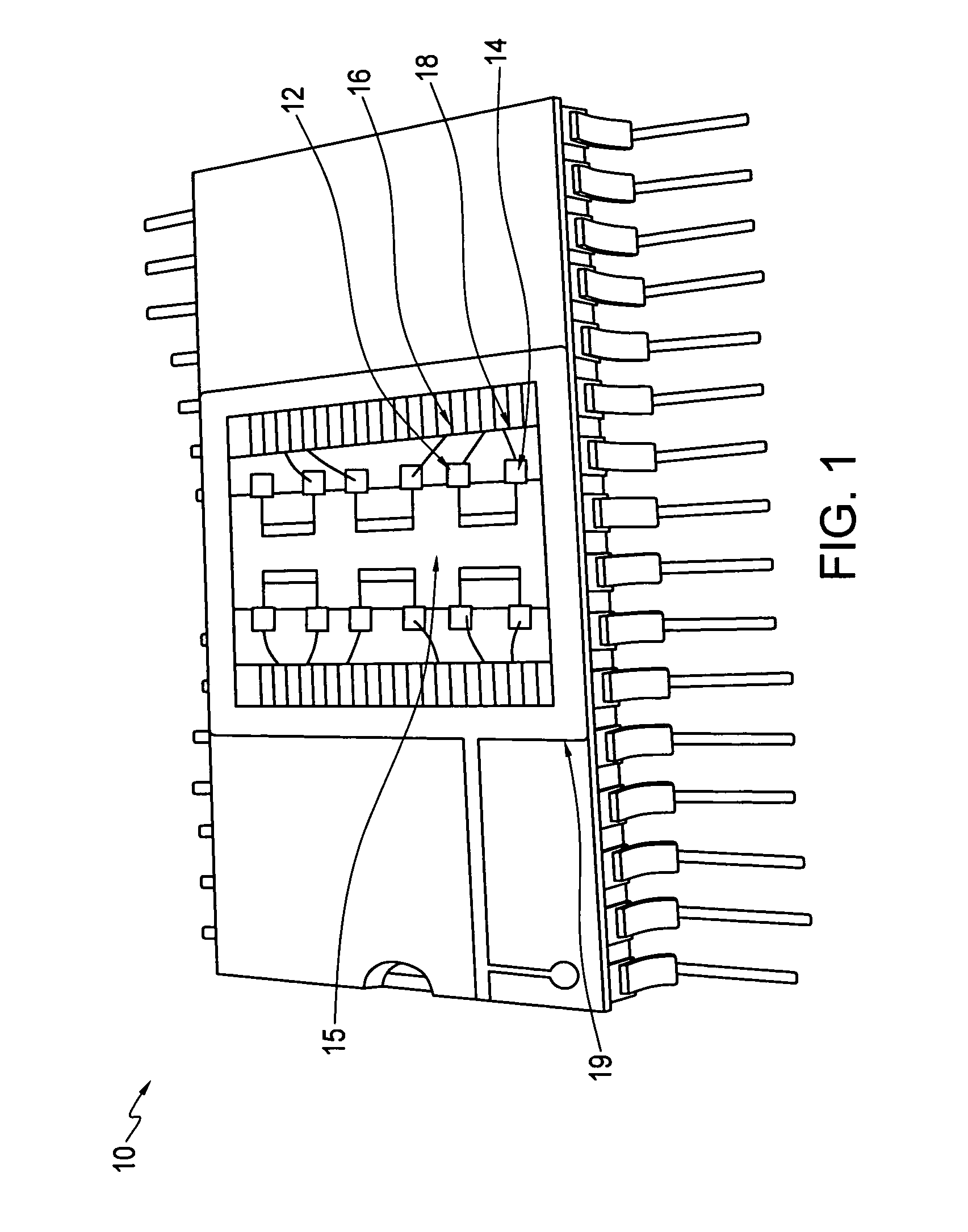Peroxide chemical sensor and sensing method
a peroxide chemical sensor and sensing technology, applied in chemical methods analysis, instruments, withdrawing sample devices, etc., can solve the problems of high cost, difficult to adapt to a small, low-power package for broad distribution, and high cost of training dogs, so as to increase resistance to current flow and reduce resistance to current flow
- Summary
- Abstract
- Description
- Claims
- Application Information
AI Technical Summary
Benefits of technology
Problems solved by technology
Method used
Image
Examples
Embodiment Construction
[0026]Embodiments of the invention provide sensors and methods that can quickly distinguish peroxides from other oxidizing agents. Sensors and sensing methods of the invention provide for detection of peroxides, including for example, vapor-phase H2O2 and organic peroxides such as di-tent-butyl peroxide. A sensor and sensing method of the invention uses at least two phthalocyanines, one of which exhibits an oxidation reaction with peroxides and the other of which exhibits a reduction reaction with peroxides. A peroxide is readily identified by a sensor of the invention when one of the at least two phthalocyanines exhibits increased resistance to current flow and the other of the at least two phthalocyanines exhibits decreased resistance to current flow.
[0027]Sensors and sensing methods are generally applicable to peroxides and can detect various peroxides of interest to general safety and security applications. Additional example peroxides that can be detected include volatile perox...
PUM
| Property | Measurement | Unit |
|---|---|---|
| thick | aaaaa | aaaaa |
| vapor pressure | aaaaa | aaaaa |
| thickness | aaaaa | aaaaa |
Abstract
Description
Claims
Application Information
 Login to View More
Login to View More - R&D
- Intellectual Property
- Life Sciences
- Materials
- Tech Scout
- Unparalleled Data Quality
- Higher Quality Content
- 60% Fewer Hallucinations
Browse by: Latest US Patents, China's latest patents, Technical Efficacy Thesaurus, Application Domain, Technology Topic, Popular Technical Reports.
© 2025 PatSnap. All rights reserved.Legal|Privacy policy|Modern Slavery Act Transparency Statement|Sitemap|About US| Contact US: help@patsnap.com



